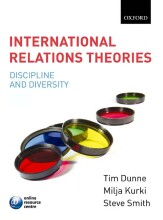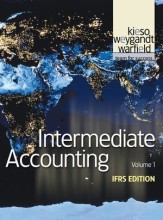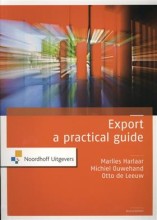Summary: Elementary Linear Algebra (Classic Version) | 9780134689470 | Lawrence E Spence, et al
- This + 400k other summaries
- A unique study and practice tool
- Never study anything twice again
- Get the grades you hope for
- 100% sure, 100% understanding
Read the summary and the most important questions on Elementary Linear Algebra (Classic Version) | 9780134689470 | Lawrence E. Spence; Arnold J. Insel; Stephen H. Friedberg
-
1.3 Subspaces
-
What is a subspace?
- A subspace is a subset (W) in V over a field F in which the closure properties must hold and the Ov from V must be in W as well.
- for any x, y in W, x+y is also inW
- for any c in F and x in W, cx is also in W
-0v is in W -
Is the intersection of subspaces from V a subspace of V?
Yes,
If, C is a number of subspaces in V
and W stands for the intersection of subspaces in C
-Then we know that Ov is in W as it is contained in every subspace in C given that they are subspaces.
-Now, let c be a scalar from F,
and x, y vectors from W
then x+y are contained in each subspace in C
and cx is also contained in each subspace in C
Hence, x+y and cx are in W
-So by definition W is a subspace of V because all 3 conditions hold -
1.4 Linear Combinations & System of Linear Equations
This is a preview. There are 1 more flashcards available for chapter 1.4
Show more cards here -
What is a Span?
- The set of all possible linear combinations in V
- If S is a nonempty subset of V, V being a vector space.
then span(S) is the set made of all linear combinations of vectors v in subset S
-span(empty set)= 0
- Span of any subset (S) of a vector space (V), is a subspace of V that contains S, in other words any V that contains subset S must also contain span(S) which is a subspace of V -
What is a generating set?
- a generating set is asubset (S) in the vector space V, whosevectors generate/spans V
- S is a generating set/ Sspans V if span(S)=V
- in other words every vector in V can be written as alinear combination ofvectors v in S, so the span(S) "produces" V -
1.5 Linear Dependence & Independence
This is a preview. There are 2 more flashcards available for chapter 1.5
Show more cards here -
What is a Linearly Dependent Subset?
-If S is a subset in vector space V and there exists a finite number of distinct vectors u1,u2,..,un in S
and a finite number of distinct scalarsa1 ,a2 ,...,an (NOT ALL ZERO) in V
such thata1u1 +a2u2 +...+anun =0
then S is called linearly dependent.
-Any subset S of vector space V that contains the zero vector is a linearly dependent subset because 0v->(1)(0) = 0 is a nontrivial representation of 0 as a linear combination of vectors in S -
What is a Linearly Independent subset?
-A subset S of a vector space V is linearly independent iff the only representation of 0 as linear combination of vecotrs u in V are trivial representations.
- a1u1+a2u2+...+anun= 0 -> a1=a2=...=an=0
-the empty set is linearly independent because linearly dependent sets must be nonempty
-a set containing only one nonzero vector is linearly independent because the only solution for a1u1=0, given that u1 is not 0 is a1=0 -
What are some immediate consequences of the definitions of linear dependence & independence?
1. If we have V, a vector space that contains S2 and S2 contains S1, if S1 is linearly dependent, then S2 is linearly dependent.
2.If V is a vector space that contains S2 and S2 contains S1, if S2 is linearly independent, then S1 is linearly independent. -
1.6 Base & Dimension
This is a preview. There are 4 more flashcards available for chapter 1.6
Show more cards here -
What is a Basis?
-it is a linearly independent subset of vector space V, that generates V.
- "A generating set"
-Span(B)=V -> any vector v in V can be written as a linear combination of vectors in B
- Knowing that Span(empty set) is linearly independent (Span(emptyset )=0) so (empty set) is a basis for zero vector space
-in Fn ->e1 ,e2 ,e3,...are standard basis for Fne1 =(1,0 ,...)e2 =(0,1,0 ..)...
-in Pn(R) -> {1,x,x^2 ,...} is standard basis for polynomials -
What is the Replacement Theorem?
Repalement theorem defines a generating set LuH for vector space V. Where V is a vector space that is generated by a set G which contains n vectors. And where L is a linearly independent subset of V which contains m vectors.
Then m</=n and there exists a subset H of G containing n-m vectors such than LuH generates V
-If V is a vector space with finite basis, then all bases for V are finite and contain the exact same number of vectors
-> if B,Y,Q are bases for V then they all contain n vectors. -
What is a Finite Dimensional Vector Space?
-It is a vector space which has a finite number of n vectors in its basis.
- The number n of elements which is the same for every basis of V is called the dimension of V, dim(V)
-A vector space with an infinite number of vectors in its basis is called an infinite dimensional vector space
-{0} has dimension 0
- F^n has dimension n
-Mmxn has dimension mn
-Pn(F) has dimension n+1
-P(F) is infinite dimensional because it's basis is {1,x,x^2,......}
- Higher grades + faster learning
- Never study anything twice
- 100% sure, 100% understanding































